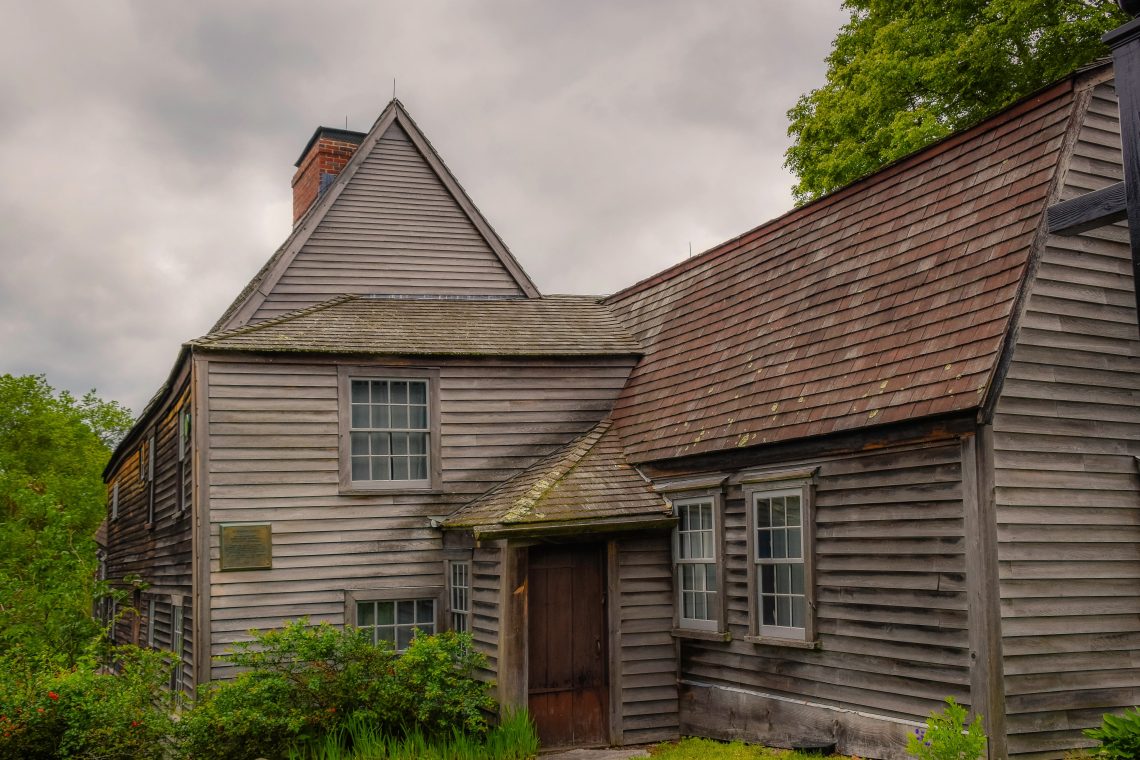
Parsley, Sage, Red Madder, and Thyme
My kitchen garden provides a pleasant variety of fresh herbs to enhance our meals. Those plants had their origins in our local nurseries. But I recently learned that I had a lot more to learn about herbs from my long-time friend Lisa Brayton, who serves as a docent at the Fairbanks House in Dedham, Mass. (Photo above.) Built in 1637, the Fairbanks House is the oldest surviving timber-frame house in North America. Lisa’s particular area of interest is the house’s herb garden. A member of the Fairbanks Garden Club, she explained that the more than 30 different herbs growing at the side of the house reflect the kinds of plants cultivated by 17th-century settlers like Jonathan and Grace Fairbanks, the first owners.
Of course, humans have been using medicinal herbs since the Stone Age. The folks at Herbal History Research Network tell us that these dietary ingredients were integral to local health paradigms, with wild, bitter greens playing a starring role. While modern city-bred humans may look at a green landscape, marveling at the verdant view, those ancestors – or, for that matter, folks who make their living working in the fields – see an edible, wild leafy green landscape with many culinary treasures popping up all over.
Herbs for living and dyeing
Lisa tells listeners on her tours that the first European immigrants in New England – mainly British – brought from England the seeds that they would need. These herbs were essential to them not just for flavoring their meals, but also to add nutrition, dye clothing, and repel insects. Most were planted for medicinal purpose. Wormwood artemisia treated worms; sorrel for scurvy; lavender to prevent fainting; mother of thyme for headaches; rose campion for a diuretic and kidney stones. Some served a dual purpose: yarrow was both an ointment and a tea; lemon thyme a seasoning as well as an antiseptic; rhubarb both as fruit and astringent.
Herbs for stuffing and strewing
Other herbs served a household purpose: false indigo for blue dye and madder roots for red dye, including Persian carpets. The British military used madder roots to make those distinctive Red Coats. Tansy, a preservative, was used for embalming; southernwood and santolina as moth repellant and gallium verum (lady’s bedstraw) for stuffing mattresses. Plants such as hyssop, lavender, and tansy with favorable scents as well as insecticidal properties served as “strewing herbs” to be spread on the floors of houses and barns.
A few plants were adopted from the Native Americans. From their interactions, the colonists learned that milkweed roots were useful as a laxative and that the stems could be used for rope. In addition, they used the silk from milkweed seed pods to stuff pillows. Jerusalem artichokes, adopted from the Native Americans, produced edible tubers, which later became popular in France.
Herbs for eating and treating
While herbs such as sage, chives, spearmint, thyme, and savory are used in modern cooking, these early settlers used their herbs primarily for medicine. Imagine chewing a sprig of thyme to ease a toothache. As for food flavoring, Lisa observed that in 17th-century America, foods were cooked over large open fires in a huge iron pot where available meat and vegetables were often prepared as stews. Once cooked, the leftovers remained in the pot for meals the following day … or days. Lisa likes to remind her tour groups of the rhyme, “Peas porridge hot/peas porridge cold/peas porridge in the pot/nine days old.” Those porridges probably were enhanced by the addition of some flavorful herbs – sometimes, I suspect, to mask a slightly “off” flavor.
The next time you’re trolling the aisles of your local food emporium, you might think about the ways that our ancestors brought forth various items from other cultures to enhance our food experience – especially the herbs and spices that we’ve adopted from other areas of the globe. And maybe we could learn some other lessons. I’m not sure that would mean stuffing pillows with gallium verum, but we might consider how to creatively use some strewing herbs. What do you think?
To comment, please click on “Read in Browser” or on the headline to view the blog on the website. You can log in and comment at the end of the blog to share your thoughts and start a discussion.
If you’d like to share the blog, click on the Facebook icon or one of the others. Thanks!




